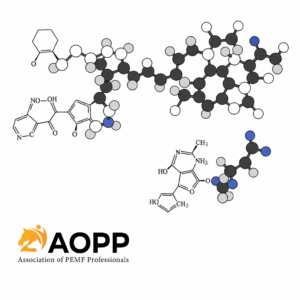The use of pulsed electromagnetic field (PEMF) has demonstrated effectiveness in the management of femoral head osteonecrosis as well as nonunion fractures; however, the effects of PEMF on preventing glucocorticoid-induced osteoporosis (GIOP) have not been extensively studied. The aim of this investigation was to explore the effectiveness of PEMF stimulation in averting GIOP in rats and uncover the potential fundamental mechanisms involved. A total of seventy-two adult male Wistar rats composed the experimental group and were subsequently assigned to three groups for treatment. (1) On the first day (day 0), 24 rats in the PEMF group were intravenously injected with lipopolysaccharide (LPS) at a concentration of 10 μg/kg. This was followed by intramuscular injections of methylprednisolone acetate (MPSL) at a dose of 20 mg/kg for the subsequent three days (days 1–3). Subsequently, the rats were exposed to PEMF for 4 h daily, with the duration varying from 1 to 8 weeks. (2) Adhering to the injection schedule of the PEMF group, the MPSL group (consisting of 24 rats) was administered LPS and MPSL, omitting PEMF stimulation. (3) The PS group (n = 24) was administered injections of 0.9% saline solution in an identical manner and at the same time intervals as the other two groups. At 1, 2, 4, and 8 weeks after the last MPSL (or saline) injection, bone mineral density (BMD), bone mineral content (BMC), and the expression levels of bone morphogenetic protein-2 (BMP-2) mRNA and protein in the proximal femur were measured. Analysis of the PS and PEMF groups at 1, 2, 4, and 8 weeks after the final saline (or MPSL) injection revealed no statistically significant differences in BMD or BMC (P > 0.05). From weeks 2 through 8, the MPSL group rats displayed a marked decrease in BMD and BMC compared to those of the PS group, and at the 4-week and 8-week time points, these values were significantly lower than those of the PEMF group (P < 0.05). Compared with those in the MPSL and PS groups, the expression levels of BMP-2 mRNA markedly increased after PEMF treatment, peaking one week later and sustaining a heightened state for four weeks, but decreased only at the eighth week. Conversely, BMP-2 protein expression exhibited a similar upward trend, peaking two weeks after PEMF treatment and then remaining elevated for the subsequent eight weeks. PEMF stimulation has been shown to have prophylactic potential against GIOP in rats, possibly through the upregulation expression of BMP-2 expression.
Discussion
Osteoporosis is a bone disease that involves bone mass loss and structural weakening, resulting in bones that are more fragile and prone to fractures18. An imbalance between bone resorption and bone formation plays a significant role in the progression of various types of osteoporosis, ultimately leading to a decrease in bone mineral density and overall bone strength19. Glucocorticoid medication, which has anti-inflammatory effects, is a commonly administered therapeutic for a wide array of illnesses, such as arthritis, lupus, and respiratory disorders such as asthma3. Based on previous investigations, glucocorticoid therapy diminishes bone formation and intensifies bone resorption, resulting in negative calcium homeostasis and heightened vulnerability to fractures20. Immediately upon glucocorticoid treatment, bone loss sets in rapidly, increasing the likelihood of fractures, while prolonged glucocorticoid administration contributes to the onset of osteopenia. Previous research has suggested that a low dose of glucocorticoids notably curtails bone formation, presumably due to diminished bone remodeling, which has implications for bone strength21,22. In our investigation, following glucocorticoid administration, the rats in the MPSL group exhibited cartilage erosion, and the bone trabeculae in the proximal femur were either infrequent or disrupted. Currently, numerous pharmacological modalities are available for the treatment of osteoporosis, including calcium, vitamin D, bisphosphonates, hormone replacement therapy, calcitonin, parathyroid hormone, and raloxifene23. However, the extended use of osteoporosis medications is associated with potential adverse effects, including atypical femoral fractures in the subtrochanteric or diaphyseal region, gastrointestinal distress, and necrosis of the jawbone24.
Apart from pharmacotherapy, physical therapy that incorporates safe and nonintrusive biophysical interventions should be strongly advocated for clinical use. Compared to pharmacological interventions, PEMFs are considered an effective treatment modality for a wide range of bone conditions, including fresh fractures, fractures with delayed healing or failure to unite, diabetic osteopenia, and bone necrosis25. To date, there is a lack of clarity regarding the effects PEMF exerts on patients with GIOP. PEMFs, with their beneficial effects as a form of mechanical stimulation for bone mass preservation, have potential for clinical use in preventing and managing osteoporosis25,26. This research aimed to examine the preventative impact of PEMF on GIOP in rats, while delving into the mechanisms responsible. Inspired by the report published by Ishida et al., the PEMF parameters were chosen based on their observation that PEMF can lower the chances of steroid-induced osteonecrosis17. Guided by our preceding research, we kept the electromagnetic frequency constant while modifying the daily stimulation interval from 10 to 4 h14.
Monitoring the BMD and BMC in the proximal femur of the rats revealed a progressive decrease in the MPSL group, starting at week 2 and attaining the lowest values by week 8. A marked statistical distinction was observed in comparison to the remaining two groups, suggesting that the administration of glucocorticoids diminishes BMD and BMC in rats, thereby contributing to the development of GIOP. In contrast, compared with those in the PS group, the BMD and BMC in the PEMF group did not significantly differ at any measurement point, and these values were markedly greater than those in the MPSL group at weeks 4 and 8. Hence, we are convinced that PEMF has the potential to counter glucocorticoid-mediated bone loss, thereby sustaining BMD and BMC within normal levels.
BMP-2, a growth factor that accelerates bone renewal and boosts bone robustness and density, has garnered widespread application in the treatment of osteoporosis and its associated conditions15,16. Among the numerous significant markers related to bone health, including BALP, osteocalcin, NTX, and Vitamin D, BMP-2 was selected for assessment in this study due to its pivotal role in regulating bone formation and its direct relevance to the specific research questions we aimed to address. BMP-2’s established role in promoting osteogenic differentiation and bone regeneration, as well as its upregulation in response to bone injury, made it a particularly suitable marker for evaluating the effects of our experimental interventions.
Because of its fleeting half-life and inadequate retention capability, BMP-2 is unsuitable for administration as a standalone injection27. Additionally, the direct administration of large quantities of BMP-2 can result in severe complications and side effects. PEMF, a noninvasive therapeutic method, exhibits endocrine-like actions, promoting the a sustained secretion of cytokines, such as transforming growth factor-β1 (TGF-β1) and BMP-2, that aid osteoblast differentiation in bone tissue affected by a fracture, thus facilitating bone tissue reparative processes28. However, the precise mechanism responsible for PEMF mediated enhancement of bone formation, specifically in GIOP treatment, is still not fully understood. The findings of our investigation revealed a downregulation of BMP-2 mRNA and protein expression in the MPSL cohort, whereas an upregulation was observed in the PEMF group. Hence, there is a significant probability that PEMF stimulation boosts BMP-2 expression in the proximal femur area of rats given glucocorticoids, playing a role in the prevention of GIOP, likely constituting one of the key mechanisms involved. As a prophylactic measure, PEMF could be administered alongside glucocorticoids for the management of various clinical disorders, including arthritis, asthma, and SLE, for which high-dose glucocorticoid therapy is necessary.
While our study has focused on the potential benefits of PEMF application in preventing GIOP, it is important to also consider the safety aspects of long-term use. PEMF therapy is generally considered safe and non-invasive, with minimal reported side effects such as mild skin irritation or discomfort in some cases. However, long-term exposure to PEMF may raise concerns related to potential cumulative effects on tissue or cellular function. To date, there is limited research specifically addressing the long-term safety of PEMF application. Therefore, while our findings suggest promising benefits of PEMF in preventing GIOP, caution should be exercised in extrapolating these results to long-term use without additional safety data.
Our study findings suggest that PEMF stimulation can prevent GIOP in rats. However, several potential limiting factors need to be considered when translating these results into clinical practice. First, the sample size in our study was relatively small, which may limit the generalizability of our findings to larger populations. Future studies with larger sample sizes are needed to confirm our results and explore potential variations across different patient groups. Second, it is important to acknowledge the inherent differences between rats and humans in terms of physiology, metabolism, and disease progression. These species-specific differences may affect the applicability of our findings to human patients. The specific conditions and environment in which the rats were studied may not fully represent the complex clinical scenarios encountered in human patients. Therefore, further clinical trials in humans are necessary to validate our findings and establish the safety and efficacy of the treatment in a clinical setting. While our study offers preliminary indications that PEMF stimulation may prevent GIOP, several potential limiting factors must be taken into consideration in future research endeavors to comprehensively grasp the clinical ramifications of our discoveries.
Our study has several limitations that should be noted. Firstly, the lack of microCT data significantly limits our ability to fully characterize bone microarchitecture, which is a crucial aspect for understanding bone quality and strength. MicroCT provides high-resolution images of bone structure, allowing for detailed analysis of trabecular thickness, spacing, and connectivity, all of which are important indicators of bone mechanical properties. The absence of these data in our study means that we are unable to comprehensively assess the impact of PEMF on bone microstructure. To address this limitation, future studies should incorporate microCT analysis to provide a more detailed and comprehensive view of bone structural changes. This would enable a more accurate assessment of bone quality and strength. Secondly, we acknowledge that our histological assessment relied on qualitative observations, which may be subject to inter-observer variability. Furthermore, the lack of histological scoring criteria and the absence of blinded assessment are additional limitations in our study. Incorporating objective quantitative measurements and developing standardized scoring criteria would strengthen the rigor of our histological analysis and enhance the reliability of our findings. Thirdly, a notable limitation of this study is the absence of preliminary experimental data exploring the dose–response relationships of pulsed electromagnetic field (PEMF) stimulation in the context of glucocorticoid-induced osteoporosis. Future research should investigate the effects of varying PEMF parameters to identify the optimal dose and duration for therapeutic efficacy. Fourthly, the exclusion of additional blood markers limits our understanding of the underlying mechanisms and severity of bone changes. Lastly, Detection bias might also be a concern, given potential differences in the sensitivity or specificity of the methods used to measure BMD, BMP-2 mRNA and protein expression. In future studies, we plan to mitigate this bias by using more sensitive test methods.
Conclusions
PEMF stimulation can prevent GIOP in rats, and the underlying mechanisms increased the expression of BMP-2. PEMF stimulation is both effective and safe without the need for invasive procedures, serves as a beneficial prophylaxis for GIOP.
